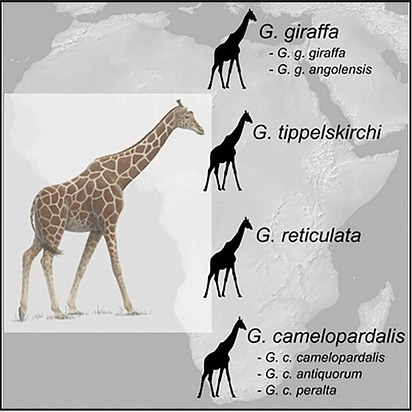-
Tips for becoming a good boxer - November 6, 2020
-
7 expert tips for making your hens night a memorable one - November 6, 2020
-
5 reasons to host your Christmas party on a cruise boat - November 6, 2020
-
What to do when you’re charged with a crime - November 6, 2020
-
Should you get one or multiple dogs? Here’s all you need to know - November 3, 2020
-
A Guide: How to Build Your Very Own Magic Mirror - February 14, 2019
-
Our Top Inspirational Baseball Stars - November 24, 2018
-
Five Tech Tools That Will Help You Turn Your Blog into a Business - November 24, 2018
-
How to Indulge on Vacation without Expanding Your Waist - November 9, 2018
-
5 Strategies for Businesses to Appeal to Today’s Increasingly Mobile-Crazed Customers - November 9, 2018
There are four giraffe species, not one
The different species don’t have obviously different appearances, which is why they were only just discovered. Similarly, the genetic studies supported previous findings by the team that could not differentiate the formerly recognized subspecies Thornicroft’s giraffe (G. c. thornicrofti) with Masai giraffe (G. c. tippelskirchi).
Advertisement
“With now four distinct species, the conservation status of each of these can be better defined and in turn added to the IUCN (International Union for Conservation of Nature) Red List (of threatened species)”, Julian Fennessy of the Giraffe Conservation Foundation in Namibia says.
The new Southern giraffe (Giraffa giraffa) becomes its own species, with two subspecies beneath it: the Angolan giraffe (G. g. angolensis) and the South African giraffe (G. g. giraffa). We know that giraffes, while widely distributed, are declining almost across their range, with some narrowly distributed populations in serious trouble. Previously, scientists classified giraffes as all one species, Giraffa camelopardalis, with nine distinct subspecies living in isolation from and not reproducing with one another in the wild.
Geneticist Professor Axel Janke, from Goethe University in Germany, said: “We were extremely surprised, because the morphological and coat pattern differences between giraffe are limited”.
The study tracked the distribution of 7 specific genetic sequences – chosen to enable researchers to measure genetic diversity – in nuclear DNA from skin biopsies of 190 giraffes.
If formally recognised as four separate species, three of those four would suddenly be deemed more seriously threatened by the red list, Fennessay said, which would hopefully catalyse greater efforts to protect them.
The genetic analysis shows that there are four highly distinct groups of giraffe, which apparently do not mate with each other in the wild. The genetic differences led the researchers to declare four species, where before there had only been one. The researchers also note that each species seem to prefer the same kinds of habitat, and that some of them even live the same areas in the wild. The species also look slightly different from each other: the Masai giraffe, for example, is noticeably darker, with patches separated by irregular, light brown lines all the way down to their legs. Now, we need to understand whether the species behave differently, whether they have different mating systems, whether they’re adapted to different climates, and what else sets them apart, Janke says.
It remains to be seen whether the latest study will have any impact on giraffe conservation, he says.
The four new giraffe species, and their subspecies.
Their closest relative is the long-necked African mammal called the okapi. As The Guardian reports, giraffes have suffered a decline in number from around 150,000 across Africa three decades ago to 100,000 today. The sequences fell into four distinct patterns that strongly suggested separate species.
Advertisement
The historically accepted definition of one species of giraffe was based on a description in 1758 by the Swedish taxonomist Carl Linnaeus, who examined a Nubian giraffe (now to be considered as a northern giraffe). “They’re nice, big animals”. It is a distinct subspecies of the northern giraffe.




























